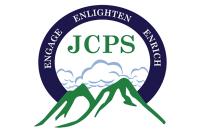Re-learning those old, familiar (bird) songs
I like “old time rock and roll” too. And I recently got some of my old time records, CDs, iPods, etc., off the shelf. But what I‘ve been listening to are bird calls and songs. The birds are getting ready for the breeding season — and so am I, in my own way.
I forget most everything from season to season, if not from day to day. Wildflower names have to be relearned. Bird calls and songs fade. So I return each year to self-imposed and self-taught remedial Bird Song 101.
Throughout the year male and female birds of the same species use various call notes to stay in contact with one another or as signals of alarm. For instance, male and female eastern towhees whistle a call that sounds like “tow-hee.” Therefore the common name.
During the breeding season, the male of the species uses the vocalization we recognize as song in order to establish a breeding territory, attract a female, and warn other males of the same or competing species out of that territory.
The male towhee’s song sounds for all the world like “drink-your-tea.” If you learn the phrases associated with specific calls and songs (“mnemonics” or memory devices), you will be able to identify most birds whether you can see them or not.
Some birds can really sing. Rose-breasted grosbeaks “sound like robins that have had music lessons.” Scarlet tanagers, on the other hand, “sound like robins with a sore throat.” In my opinion, winter wrens emit the most sensational bird vocalization in the southern mountains: a musical series of bubbling warbles and trills that may last for five seconds or more. It doesn’t really require a memonic to be recognized. There’s nothing else like it.
Related Items
There are several bird songs that mystify people. You can hear their songs on a regular basis but never seem to locate the birds. Two of the most common are the yellow-billed cuckoo and the ovenbird.
The yellow-billed cuckoo is a bird that is often heard but seldom seen. Along with the Swainson’s warbler, it is one of the most furtive birds that breeds in Western North Carolina. The cuckoo is known to farmers as the “rain crow” because its hollow, low-pitched “kowp, kowp, kwop, kwop” vocalizations are often sounded just before a summer thunderstorm.
The ovenbird resembles a thrush but is actually a warbler with an orange crown. It nests on the ground in an oven-shaped nest. All day long you can hear their rising “teach-teach-teach” vocalizations without ever seeing the bird except, at best, as a flitting shadow.
There are numerous cassette guides to bird calls and songs. Although I don’t recommend the two-volume Stokes Field Guide to Birds (1996) by Donald and Lillian Stokes as an everyday field guide, I do recommend Stokes Field Guide to Bird Songs (Time-Warner Audio Books, 1997) by Lang Elliott with Donald and Lillian Stokes. For mnemonics, I like the Audubon Society Master Guide to Birding (Knopf, 1983). Some of my favorite mnemonics:
• “I AM SO LAY-ZEE” (black-throated blue warbler)
• “SWEET-SWEET HOW SWEET I AM” (yellow warbler)
• “PLEASE-PLEASE-PLEASED TO MEET CHA”” (chestnut-sided warbler)
• “QUICK! THREE-BEERS” (olive-sided flycatcher)
• “PEE-A-WEE” (eastern wood pewee)
Just take those old records off the shelf
I’ll sit and listen to ‘em by m’self
Today’s music ain’t got the same soul
I like that old time rock and roll.
— Bob Seger
George Ellison wrote the biographical introductions for the reissues of two Appalachian classics: Horace Kephart’s Our Southern Highlanders and James Mooney’s History, Myths, and Sacred Formulas of the Cherokees. In June 2005, a selection of his Back Then columns was published by The History Press in Charleston as Mountain Passages: Natural and Cultural History of Western North Carolina and the Great Smoky Mountains. Readers can contact him at P.O. Box 1262, Bryson City, N.C., 28713, or at This email address is being protected from spambots. You need JavaScript enabled to view it..









